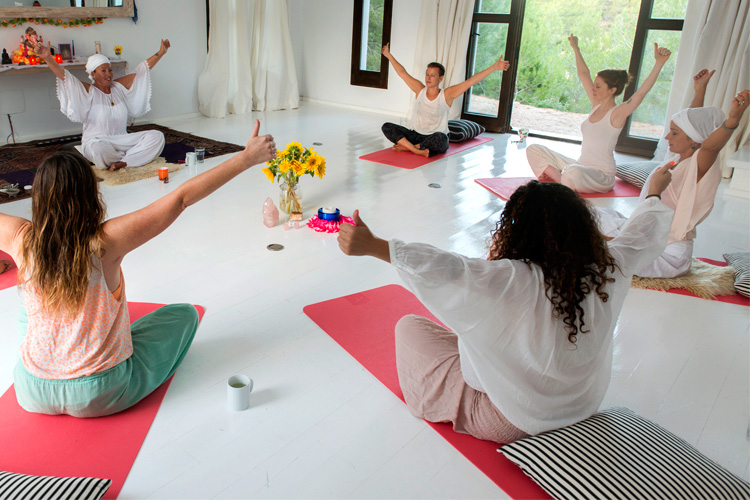
Restorative yoga, although still a lesser-known option, remains a favorite among people worldwide because of its extremely de-stressing effects and its ability to open and stretch the body passively.
Popular Restorative yoga poses include Child’s Pose (Balasana), Legs-Up-The-Wall Pose (Viparita Karani), Reclining Hero Pose (Supta Virasana), Seated Twist Over a Bolster, Reclining Bound Angle Pose (Supta Baddha Konasana) and Corpse Pose (Savasana). Each pose may be performed using varying amounts of props. For example, someone who is very flexible may only want one blanket under their back for Reclining Hero Pose, while a less flexible individual may want a few blankets and a bolster. No matter how many props are added, the key is that each of these poses has wonderfully soothing properties and opens up a different part of the body.
The activity of the mind is also an important factor of Restorative yoga. Because the body is able to come into a state of tranquility during each pose – and because each pose is held for a longer period of time than it would be in a more movement-based practice – the mind may sometimes begin to wander. Restorative yoga students should strive to bring the attention to the breath. For some, repeating a silent mantra along with the flow of the breath may be the perfect way to let the mind be calm. If you find your mind wandering during your Restorative practice, focus once again on your breathing, acknowledge any outside thoughts that you are experiencing, and peacefully let them go.
A Restorative practice, if done correctly, should be deeply calming and tranquil – and is a perfect counterbalance to the more vigorous, Vinyasa-style classes. As suggested by B.K.S. Iyengar, all yogis who have a consistent yoga practice should incorporate Restorative yoga into their schedule at least once a week to reap the full benefits.
Sources
- Do Restorative Yoga, “What is Restorative Yoga?” http://dorestorativeyoga.com/
- Ann Pizer, About Health, “Restorative Yoga,” http://yoga.about.com/od/typesofyoga/a/Restorative-Yoga.htm
